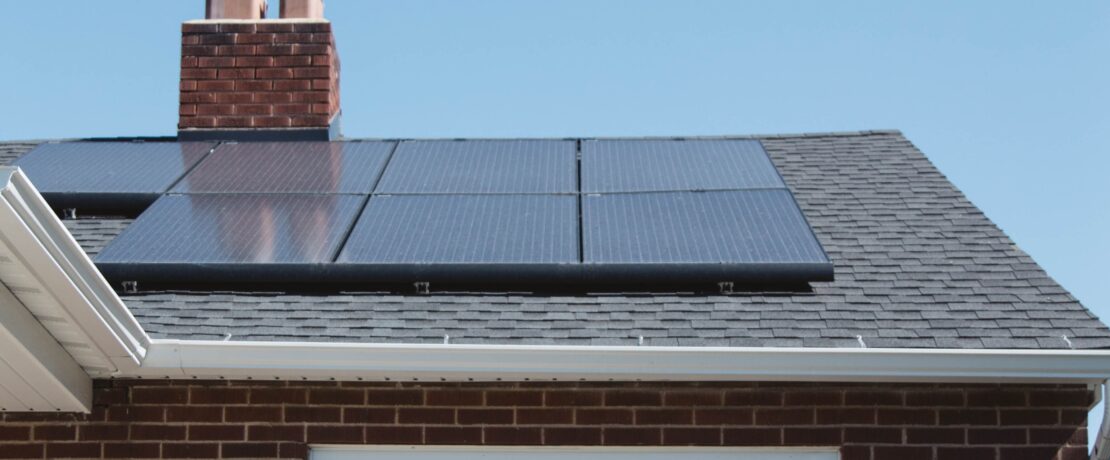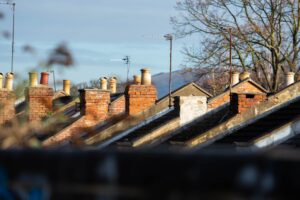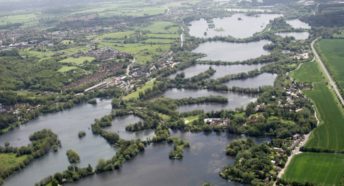CPRE Bucks talks roof top solar, over the airways.
Don’t sacrifice our land to solar, help us shout our findings from the rooftops.
This week following the national office launching their new Roof Top Solar campaign. Our chair Paula Buck was invited to represent Buckinghamshire in a live radio interview discussing the roof top solar/ solar farm debate. Presenter Roberto Perrone hosted on BBC 3 Counties radio.
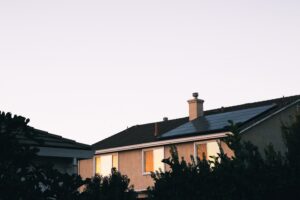
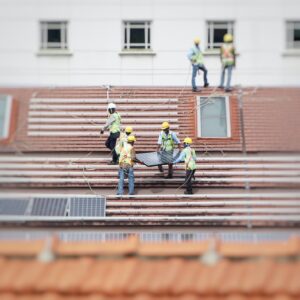
Although solar energy is a fantastic source of renewable energy, where we harvest it from is crucial. Solar farms are being erected on often good quality land with rich soil that could be used for agriculture. In turn offering jobs and local produce to Bucks residence. With the cost of living on the rise, having a reliable access to affordable, nutritious food has never be so important.
What are we doing? As well as raising general awareness with local residents we have raised this issue with our council directly. Proposing a new policy for solar deployment that encourages and incentivises rooftop solar on commercial and public buildings. Of course we feel council-owned buildings are a good place to start and would set a great example to other local businesses.
Listen to our chair Paula Buck discussing this on air below, along with details of our full press release.

**Full Press Release**
- Major new report by CPRE, the countryside charity, finds majority of required solar capacity could be installed unobtrusively on existing buildings and car parks, with almost universal public support
-
Across Buckinghamshire, new study by local branch of CPRE suggests 96 hectares of rooftop space on existing commercial and public buildings is available for siting of solar panels
-
Decarbonising the grid requires far less land than previously feared, after rooftop solar potential was analysed and quantified for a new report
-
Installing solar panels should be a requirement of planning permission – for all car parks, new buildings and major renovations
Over half of the solar panels required to hit government net zero targets could be fitted on rooftops and car parks, a major new report for CPRE, the countryside charity, has found. The research, by the UCL Energy Institute, shows that decarbonising the grid requires far less land than previously feared.
Additionally, new research by CPRE’s Buckinghamshire branch has found that on existing commercial and public buildings alone across Buckinghamshire there is potential for 96 hectares of rooftop space available for solar panels, equivalent to 134 football pitches in size, and enough to power thousands of local homes and businesses.
CPRE Bucks Trustee Neil Salisbury said:
“This report aims to put rooftop solar at the forefront of a clean energy revolution, to help reduce energy bills, tackle climate emergency, and protect the countryside while empowering communities and businesses to transition to sustainable energy.
“Buckinghamshire Council needs to do more to actively promote rooftop solar – on domestic, commercial and public buildings wherever possible – and save the farmland that we so desperately need to retain.
“In the last year alone in Buckinghamshire, there were planning applications for 273 hectares of agricultural land to be sacrificed to solar farms, much of it good quality.
“The government is not doing enough on this issue but Bucks can set an example. It can show the way by taking pro-active, specific, steps to encourage and incentivise rooftop solar on commercial and public buildings. Indeed, Council-owned buildings are a good place to start. A fit-for-purpose policy for all solar deployment is needed now, not in several years’ time when the new Local Plan is finally adopted.”
Installing solar panels unobtrusively on existing buildings and car parks would enjoy near universal public support and help minimise objections to large solar farms in the countryside, the report says. The potential of urban brownfield sites to generate renewable energy is being dramatically underutilised at present.
A series of crises, including energy security, food security, climate change, nature recovery and housing, have placed the countryside under intense pressure.
The report concludes that, in order to transition to renewable energy in the timeframe required, there is no alternative but to accept ground mounted solar projects will be necessary. However, it offers hope that valuable landscapes can be protected, the need for additional large Greenfield schemes gradually removed, and contentious planning disputes avoided if rooftop solar is prioritised.
The government has set a national target of 70GW of solar energy generation by 2035. The independent review analysed and quantified the solar photovoltaic capacity of rooftops and car parks across England, providing an assessment of the total energy that could be generated.
The key findings are:
-
Installing solar panels on existing rooftops and other land such as car parks could provide at least 40-50GW in England by 2035; and
-
Longer term to 2050, and with further investment, there is potential for up to 117GW of low carbon electricity to be generated from roofs and other developed spaces
CPRE is calling on the government to ensure all suitable new buildings have rooftop solar as standard. Regulations should be updated so that solar capacity is a requirement of planning permission for major refurbishments and new residential, commercial and industrial buildings.
Roger Mortlock, chief executive of CPRE, the countryside charity, said:
“We are missing a trick in failing to install more solar panels on roofs and car parks. Rooftop solar has almost universal public support. It’s unobtrusive and largely out of the line of sight, which means less objections and a speedier passage through the planning system.
The planning system is stuck in the fossil fuel age without a plan for net zero. The first step must be all new buildings and major renovations requiring solar panels as a condition of planning permission unless there are strong reasons not to.
If the government fails to kickstart a rooftop solar revolution an area of countryside larger than the size of Greater London will be required for ground-mounted schemes. CPRE’s view is that this land could be much better used for either nature recovery, public access or low impact food production; or a mixture of these.”
Prof. Mark Barrett of the UCL Energy Institute, lead author of the research, said:
“This study found there is more than sufficient potential solar capacity on rooftops and car parks in urban areas. It’s clear we can get close to meeting the government’s solar energy target without necessitating the development of large solar farms in sensitive rural areas. Urban photovoltaic panels on car parks, and new and large buildings, would be relatively cheap although retrofitting solar panels onto existing homes would be more costly.”
